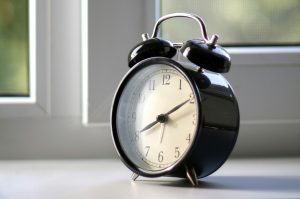
Understanding the Science Behind Daylight Saving Time
Daylight Saving Time (DST) is a secular practice that shifts the clock forward in spring and back in autumn. Although it has been around for over a century, its influence on human biology remains a topic of active debate. The simple idea is that by moving an extra hour of daylight into the evening, people will use natural light more efficiently and reduce electricity consumption. Yet, the same shift can set our internal biological clocks—known as circadian rhythms—out of sync with external cues. The result can be impaired sleep, reduced alertness and a handful of health complications.
What the Body Isn’t Telling You About Sunlight
Every day, the body’s master clock in the suprachiasmatic nucleus of the brain receives the strongest synchroniser: daylight. Light suppresses melatonin, the hormone that signals nighttime, and promotes wakefulness, metabolic activity and mood regulation. When the clock is advanced by an hour in spring, the timing of sunset and dusk becomes later on the clock, but the natural light curve remains unchanged. This misalignment causes the body to sleep later than it is scheduled, which often leaves a time gap between the body’s desires and the social schedule.
Why the Fall Shift Can Be Even More Trouble‑Prone
When we “fall back,” the clock pulls back an hour. You gain an extra hour of sleep, yet you also lose the natural cue of a sunrise that, on that day, no longer aligns with the new clock time. For many people—especially those whose work or school start before dawn—this shift can cause a persistent “too‑early” wake‑up feeling, a phenomenon associated with increased fatigue, mood disturbances and a higher risk of accidents. Incident data from the UK and other European countries consistently show spikes in traffic collisions between 1 a.m. and 4 a.m. on the first day after the fall shift.
Health Risks Linked to the Clock Change
Numerous systematic reviews and meta‑analyses confirm a connection between DST transitions and acute health incidents. The most robust evidence points to:
- Elevated rates of myocardial infarctions the week after the spring shift.
- A short‑term rise in fatal traffic accidents after both the spring and fall changes.
- Higher concentrations of cortisol and lower sleep quality in people with early morning responsibilities.
Longer‑term studies have not conclusively linked DST to chronic psychiatric conditions, but a small subset of the population—those with pre‑existing sleep disorders, cardiovascular risk factors or highly sensitive circadian profiles—showed measurable detriments. Importantly, other researchers highlight potential benefits: a slight reduction in physical‑harm crimes and more time for outdoor activity during evenings.
Can We Measure the Balance?
In practice, the net effect of DST varies by geography, individual habits and the population enrolled in the clock shift. Southern latitudes, where sunrise remains relatively early, experience milder disturbances. Swiss, for instance, have argued for abandoning DST entirely, citing a lack of energy savings. In contrast, researchers in the UK advise that the current system remains efficient for most of the public, and that targeted interventions can reduce the observable health risks.
Practical Steps to Minimise Health Impacts
While the systemic change is beyond personal control, individuals can mitigate negative effects by adapting behaviours before, during and after the transition. Below are evidence‑based actions that create a smoother circadian adjustment.
1. Capture Morning Light Immediately After Waking
Expose yourself to natural light as soon as possible after getting up. The early sky light helps reset the circadian phase to the new time. If you commute, consider a short walk outside after you exit the vehicle. Even a 10‑minute stretch in daylight can signal to the brain that it’s the new ‘morning’.
2. Gradually Shift Bed and Wake Times in the Pre‑DST Window
In the week leading up to the clock change, push bedtime and wake time 15–20 minutes later each day. This subtle advance or delay reduces the catch‑up required on the day of the transition. Consistency across weekdays and weekends keeps the rhythm stable, limiting the temptation for oversleeping on the day of the shift.
3. Maintain a Fixed Sleep Schedule Even on Weekends
Weekends are notorious for large variations in sleep timing. Stick to the same bed‑and‑wake times every day to keep the internal clock steady. If you cannot avoid late nights, limit the difference to no more than an hour to prevent a steep rebound in sleep debt.
4. Reduce Evening Light Exposure
Minimise blue‑light emission from screens and bright lamps at least two hours before bed. Use dim, amber‑colored lights if you must read or work. A natural reduction in retinal stimulation promotes timely melatonin rise.
5. Support Your Sleep Hygiene
A quiet, cool, dark bedroom, coupled with a routine that avoids stimulants such as caffeine after noon, supports uninterrupted sleep. If stress or anxiety impedes sleep, short meditation bouts or progressive muscle relaxation can be beneficial during the adjustment phase.
Using the Shift as an Educational Moment
Beyond personal habits, the current university setting offers students rich opportunities to explore circadian science. The University of Kent’s Health, Social Care and Wellbeing programmes host public seminars on sleep disorders, and the Sleep and Wellbeing Clinic delivers personalised guidance for those experiencing seasonal variation. If you are a student, consider enrolling in a health‑promotion course to learn more about managing physiological rhythms. Apply now for undergraduate study to gain research experience in the field.
Key Takeaways for Employees and Educators
Employers and teachers can help groups rebound from DST by:
- Offering flexible start times in the first week after the shift.
- Distributing concise health tips and personal light‑management guidelines.
- Encouraging the use of daylight during breaks, especially early in the morning.
- Employing ergonomic lighting solutions that mimic natural circadian cycles.
What to Do If You Feel Overwhelmed by the Shift
Should you experience persistent fatigue, mood swings or an inability to function, consult a healthcare professional. Many primary care providers now offer tele‑medicine sleep consults, and the Sleep and Wellbeing Clinic at Kent supplies evidence‑based therapy and, when appropriate, pharmacological options.
Conclusion: Adapting, Not Deferring
Daylight Saving Time will likely stay in place unless a global re‑evaluation calls for change. The most practical approach is to harmonise personal rhythms with the clock condition, employing small but consistent behavioural adaptations. By prioritising morning light, adjusting sleep windows gradually and maintaining robust sleep hygiene, you can keep the health costs of DST at bay.
For anyone seeking deeper insight into circadian health or wishing to discuss how the University of Kent can support your wellbeing journey, visit our Health and Wellbeing hub. If you are intrigued by the possibility of a research career focused on sleep science, explore our postgraduate programmes. And for students planning to study in Canterbury, submit your application today to experience evidence‑based health support firsthand.

